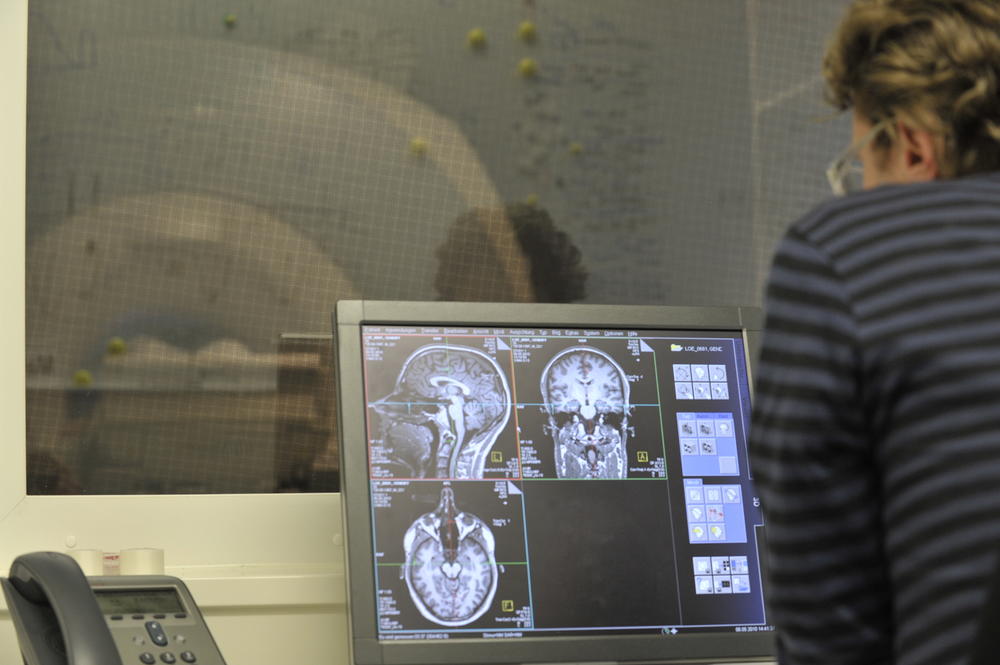Understanding the Secrets of the Brain
The Sensory Computation in Neural Systems research training group bridges the gap between the single nerve cell and human behavior.
Oct 20, 2017
How do neuronal networks of the brain function? Imaging procedures are one way of finding out.
Image Credit: Bernd Wannenmacher
How does perception work, and what is its effect on our behavior? Doctoral candidates in the Sensory Computation in Neural Systems research training group are exploring these questions in depth. From a single research question, many more can follow. How do expectations and experience influence perception? What sensory attractions affect decision making? How do the form and structure of nerve cells impact the way they function? How is information presented and transferred in neuronal networks? At the center of the research on this topic is the general question that asks, simply, how does the human brain work? “Given its complexity, we have too little information – in purely empirical terms – on the systems of the brain,” says professor of electrical engineering and computer science Klaus Obermayer, who heads this group and the field of neural information processing at the Institute of Software Engineering and Theoretical Computer Science, Technische Universität Berlin.
In order to understand the secrets of the brain without in fact examining a human brain, Obermayer and his colleagues at the research training group use models. “We have many doctoral candidates whose background is formal – such as mathematicians, physicists, and engineers. They contribute decisive theoretical input to our work,” says Obermayer.
A Broad Scientific Spectrum
The scientific spectrum of the research training group is highly diversified. Researchers here have expertise in the areas of cognitive science, machine learning, animal physiology, artificial intelligence, functional imaging, probability theory, and statistics. The mixture reflects the interdisciplinarity and diversity of research in Berlin.
As a result of the cooperation of various disciplines, theory and practice become closely intermeshed. Each of the doctoral candidates has two mentors, whose expertise is in theoretical and practical research respectively.
“In our research, we outline two fundamental methods that researchers must apply in order to better understand these complex interrelations,” Obermayer explains. “One is the collection of data under controlled experimental conditions; the other is mathematical modeling and computer simulation. This allows us to build bridges between the individual nerve cells up to human behavior.”
Professor Felix Blankenburg of the neurocomputation and neuroimaging unit at Freie Universität Berlin explains how the researchers investigate the brain using theoretical and practical methods. For instance, he works with so-called electroencephalography, in short EEG, which helps to record the bioelectrical activity of specific brain regions at the brain surface: EEG data do not however reflect neuronal activity in the individual case, only its overall output. In order to understand what happens at neuronal level, the data gathered in the experiment must first be entered into a computer. “We attempt to illustrate actual underlying neuronal activity using models that are based on empirical and theoretical findings – such as how quickly neurons pass on information or how cells are built,” says Blankenburg. “This means we can investigate the fundamental principles of information processing in the brain, also in connection with its various areas.”
Secrets of the Brain
Psychological aspects are also part of the work of the research training group. For instance, human behavior plays a part in the development of computers that should act like people. The researchers would like to find out what considerations must be made when installing machines to be actually perceived as human-like computers.
Another quite different object of the experiment will attempt to air further secrets of the brain. Grasshoppers are insects whose body temperature adapts to their environment: the difference between 10° and 30° C in the surrounding temperature is quite dramatic for the organism. On the other hand, the chirping of the grasshopper plays an important role in the choice of partner. The animals must be able to correctly organize the signals of fellow members of their species – it is an ability which they master surprisingly well, even in dramatically fluctuating temperatures. The scientists and the research training group would like to find out how the neurons in the grasshopper brain process the complex signals during adverse conditions; this would enable a better understanding of the way neuronal structures function.
With its broad scientific spectrum, the research training group is typical of the close network that characterizes the research landscape in Berlin and the excellent cooperation among its actors. The group was established in 2010 by Technische Universität Berlin and the Bernstein Center for Computational Neuroscience (BCCN) Berlin, in cooperation with Charité - Universitätsmedizin Berlin, Humboldt-Universität zu Berlin, and Freie Universität Berlin. BCCN Berlin is itself a collaborative project of Charité, Humboldt-Universität, and Technische Universität Berlin. Here too, scientists deploy mathematical and theoretical methods when experimenting in order to decode the function of the brain.

